
Explore the Historic Battle of the Lake of Two Mountains
Discover the historic Battle of the Lake of Two Mountains, where pivotal events shaped Canadian history amidst stunning Quebec landscapes.
Immerse yourself in the rich history at the Battle of the Lake of Two Mountains National Historic Site, a pivotal location in Canada's past that offers a glimpse into the events that shaped the nation. Nestled in the picturesque Quebec, this site is perfect for history enthusiasts and casual visitors alike.
A brief summary to Battle of the Lake of Two Mountains National Historic Site of Canada
- Senneville Rd, Senneville, Quebec, CA
- Visit website
Local tips
- Visit during weekdays for a quieter experience and more opportunities to connect with the site's history.
- Check online for any seasonal events or guided tours that may enhance your visit.
- Bring along a picnic to enjoy in the scenic surroundings after exploring the historical site.
- Dress appropriately for outdoor exploration, as the terrain can be uneven in parts.
- Take time to read the information plaques for a deeper understanding of the site's historical context.
Getting There
-
Car
If you are traveling by car from Montreal, take Autoroute 40 West. Continue on A-40 for about 25 km, then take exit 38 for Route 340 toward Vaudreuil-Dorion. Merge onto Route 340 and continue for about 10 km. Take the exit toward Senneville, and follow Senneville Rd. The Battle of the Lake of Two Mountains National Historic Site will be on your left. There is no entrance fee for the site.
-
Public Transportation
To reach the site by public transport, take the Exo train from Montreal to Vaudreuil station. From Vaudreuil, you can catch bus 200 towards Vaudreuil-Dorion. Get off at the stop for Senneville Rd. From there, it's approximately a 15-minute walk to the Battle of the Lake of Two Mountains National Historic Site. Make sure to check the Exo schedules as they may vary, particularly on weekends.
-
Bicycle
For those who prefer cycling, you can take the bike paths along the St. Lawrence River from Montreal. Follow the Route Verte network towards Vaudreuil-Dorion. Once you reach the area, follow the signs for Senneville Rd. It is approximately a 30 km ride from downtown Montreal to the historic site. Be sure to wear a helmet and follow all biking regulations.
Discover more about Battle of the Lake of Two Mountains National Historic Site of Canada
Iconic landmarks you can’t miss
Lac de la Sauvagine
7.2 km
Experience the tranquility of Lac de la Sauvagine in Quebec, a stunning lake surrounded by nature's beauty, perfect for relaxation and outdoor adventures.

Vignoble Les Vents d'Ange
10.2 km
Explore the enchanting Vignoble Les Vents d'Ange, a charming winery in Quebec offering exquisite wines, scenic views, and delightful culinary experiences.

Calvaire d'Oka
10.4 km
Explore the enchanting Calvaire d'Oka, a historical landmark in Quebec, where beauty and history come together in a serene setting.

House of Culture and Heritage
12.8 km
Discover the historical and cultural treasures of Saint-Eustache at the House of Culture and Heritage, a must-visit destination for every traveler.

Lieu historique national du Canada de la Bataille-des-Cèdres
17.0 km
Discover the historical significance and natural beauty of the Battle of the Cedars National Historic Site in Quebec, a must-visit for history lovers.

Bois de Belle-Rivière regional educational park
22.2 km
Explore the breathtaking landscapes and exciting activities at Bois de Belle-Riviere Regional Park in Mirabel, Quebec – a perfect getaway for nature enthusiasts.

Musée de l’histoire de Montréal-Ouest
23.1 km
Explore the captivating history of Montreal West at the Musée de l’histoire de Montréal-Ouest, a gem of cultural heritage and local stories.

Grâce Notre Dame Park
25.6 km
Discover the tranquil escape of Grâce Notre Dame Park in Montreal, a perfect spot for relaxation, picnics, and family fun amid lush greenery.

Lieu historique national de Coteau-du-Lac
25.7 km
Explore Canada's rich history and natural beauty at Lieu historique national de Coteau-du-Lac, a captivating landmark that showcases archaeological treasures and heritage.

Summit Circle Look Out
26.6 km
Experience breathtaking panoramas at Summit Circle Look Out, the premier observation deck offering stunning views of Montreal's skyline and surroundings.

65 Place Belvédère
26.8 km
Discover the historical charm of 65 Place Belvédère in Westmount, Quebec, a picturesque landmark rich in architectural beauty and heritage.

Thornhill Stairs
26.9 km
Explore Thornhill Stairs, a historic landmark in Westmount, Quebec, where nature meets architectural beauty in a serene setting.

Parc Outremont
27.3 km
Discover the tranquil charm of Parc Outremont, an urban park in Montreal perfect for leisurely strolls, picnics, and nature enthusiasts.

Place Upper-Trafalgar
27.4 km
Explore Place Upper-Trafalgar in Montreal: A historical landmark that captures the essence of the city's rich heritage and architectural beauty.

4710 Saint Ambroise St
27.8 km
Discover the architectural beauty at 4710 Saint Ambroise St in Montreal, a must-see for culture and history enthusiasts.

Unmissable attractions to see
Morgan Arboretum
2.1 km
Explore the breathtaking Morgan Arboretum, a national reserve in Quebec, offering scenic trails, diverse wildlife, and educational experiences for nature enthusiasts.

Ecomuseum Zoo
2.5 km
Explore Ecomuseum Zoo in Sainte-Anne-de-Bellevue: a family-friendly destination celebrating Quebec's wildlife and conservation efforts.

Inuit Adventures
3.4 km
Explore the rich culture of the Inuit people through immersive experiences at Inuit Adventures in Baie-D'Urfe, Quebec.
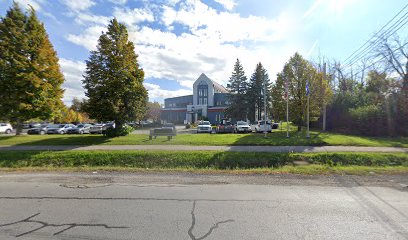
Montreal Aviation Museum
3.9 km
Explore the rich aviation history of Canada at the Montreal Aviation Museum, where the past meets the skies in an inspiring experience for all ages.

Lookout Point
5.0 km
Discover the breathtaking beauty of Lookout Point, a scenic lookout in Sainte-Anne-de-Bellevue offering stunning views of the Ottawa River and surrounding landscapes.

Écluse de Sainte-Anne-de-Bellevue | Lieu historique national du Canal-de-Sainte-Anne-de-Bellevue
5.0 km
Explore the historic Écluse de Sainte-Anne-de-Bellevue, a scenic park and national historic site showcasing Quebec's rich cultural and natural heritage.

Heroes Park
6.5 km
Explore Heroes Park in Beaconsfield, Quebec, where tranquility meets community spirit amidst beautiful gardens and scenic walking paths.

Musée régional de Vaudreuil-Soulanges
8.6 km
Delve into the captivating history of Vaudreuil-Soulanges at the Musée régional, where local heritage comes alive through engaging exhibits and cultural events.

Perrot Island
8.8 km
Explore the breathtaking landscapes and tranquil ambiance of Perrot Island in Vaudreuil-Soulanges, a perfect retreat for nature enthusiasts.

Pointe Claire Windmill
9.3 km
Experience the charm of the Pointe Claire Windmill, a historic landmark offering scenic views and rich local heritage in Quebec.

Pointe-Claire
11.3 km
Explore the stunning waterfront, rich heritage, and vibrant community of Pointe-Claire, a charming destination in Quebec that captivates every visitor.
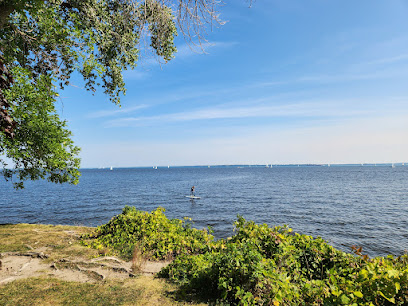
Lake Saint-Louis
12.7 km
Discover the natural beauty and recreational activities at Lake Saint-Louis, a serene destination in Quebec perfect for outdoor enthusiasts and relaxation seekers.

Activité familiale | Nid'Otruche
13.5 km
Discover the wonders of ostriches at Nid'Otruche, a family-friendly attraction in Saint-Eustache, Quebec offering unforgettable outdoor adventures.

Museum of History and Heritage Dorval
13.6 km
Explore the captivating history of Dorval at the Museum of History and Heritage, where the past comes alive by the lakeshore.

Pointe-du-Buisson / Québec Museum of Archeology
14.9 km
Explore the ancient past at Pointe-du-Buisson, a captivating museum showcasing the rich archaeological heritage of Quebec.

Essential places to dine
Restaurant Grégoire & fils
21.7 km
Discover Quebec's beloved fast food haven at Restaurant Grégoire & fils - home of the best poutine and burgers in Canada.

Steak house St-Charles
22.7 km
Discover exceptional steaks and local flavors at Steak House St-Charles in Sainte-Thérèse - A meat lover's paradise.

Entre-Deux
25.1 km
Experience culinary excellence at Entre-Deux in Montreal - where every meal is a celebration of flavor and creativity.

Alex H
25.2 km
Savor authentic European flavors in a cozy setting at Alex H, where every dish tells a story of culinary excellence.

Restaurant Ermitage : Authentic European Cuisine and Fine Dining
25.6 km
Experience authentic Eastern European cuisine in an elegant setting at Restaurant Ermitage in Montreal.

Restaurant Canada Best
25.9 km
Experience authentic Malaysian and Sri Lankan cuisine at Montreal's hidden gem - Restaurant Canada Best offers flavorful dishes in a cheerful atmosphere.

Vin Mon Lapin
27.4 km
Experience Montreal's culinary excellence at Vin Mon Lapin, where exquisite dishes meet a remarkable selection of wines in a charming atmosphere.
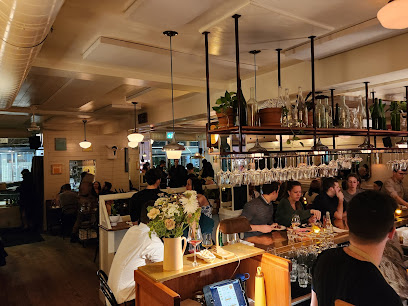
Nouveau Palais
27.4 km
Discover Nouveau Palais: A charming American diner in Montreal serving delectable hamburgers and creating unforgettable dining experiences.

Barcola Bistro Audio - Audio Foodies - Italian Restaurant - Tasting Menu
27.6 km
Discover authentic Italian flavors at Barcola Bistro in Montreal's Le Plateau-Mont-Royal—where culinary tradition meets modern charm.

Tuck Shop
27.6 km
Experience culinary artistry at Tuck Shop – Montreal's premier fine dining destination known for seasonal dishes and exceptional service.

L'Gros Luxe Mile-End
27.6 km
Experience Montreal's culinary diversity at L'Gros Luxe Mile-End - where local flavors meet innovative dining.

Île Flottante
27.8 km
Discover the eclectic flavors of Île Flottante in Montreal's Plateau-Mont-Royal – where French cuisine meets local charm.

Caribou Gourmand - Restaurant de Terroir Québécois - Souper, Brunch et grande Terrasse
28.1 km
Experience authentic Québécois cuisine at Caribou Gourmand - where local flavors meet warm hospitality in Montreal's Plateau-Mont-Royal.

Restaurant Greasy Spoon
28.2 km
Discover the flavors of Montreal at Restaurant Greasy Spoon, where gourmet burgers meet creative fusion cuisine in a family-friendly atmosphere.

Drogheria Fine
28.2 km
Experience authentic Italian cuisine at Drogheria Fine in Montreal's vibrant Le Plateau-Mont-Royal district.

Markets, malls and hidden boutiques
Art Nunavik
3.5 km
Discover the essence of Indigenous artistry at Art Nunavik - a unique wholesaler in Baie-D'Urfe, Quebec showcasing Northern talent.

La Federation des Cooperatives du Nouveau-Quebec
3.5 km
Discover exceptional home improvement solutions at La Federation des Cooperatives du Nouveau-Quebec in Baie-D'Urfe, Quebec, where creativity meets quality.

G. D'Aoust & Cie
5.0 km
Explore G. D'Aoust & Cie: Your one-stop shop in Sainte-Anne-de-Bellevue for fashion, furniture, and unique finds.

Chase Art Gallery
5.6 km
Explore the vibrant art scene at Chase Art Gallery in Beaconsfield, showcasing local Quebec talent through captivating exhibitions and unique pieces.

Le Panier
9.3 km
Discover unique gifts and gourmet delights at Le Panier, a must-visit shop in Pointe-Claire, Quebec, perfect for tourists seeking local treasures.

Indigo
9.3 km
Discover Indigo in Pointe-Claire: your ultimate destination for books, unique gifts, and a cozy atmosphere perfect for leisurely browsing.

Golf Dorval
13.2 km
Discover Golf Dorval: A premier golfing destination in Quebec offering scenic landscapes, challenging courses, and a family-friendly atmosphere.

Marché Turenne Inc
13.4 km
Discover the flavors of Quebec at Marché Turenne, a vibrant grocery store in Laval filled with local produce and gourmet treats.
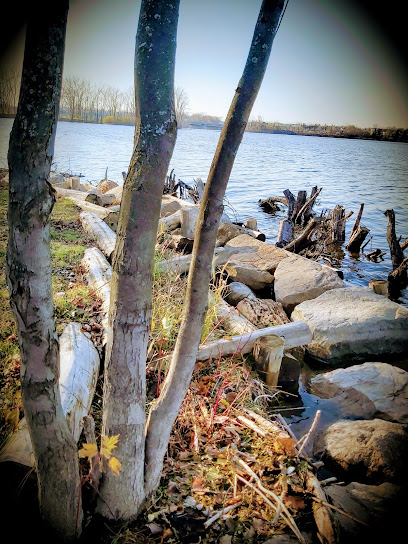
Inuit Sculptures
15.9 km
Explore exquisite Inuit sculptures in Hudson, Quebec—a perfect blend of art, culture, and Indigenous heritage.

Sequoia
21.9 km
Experience the authentic Native American culture at Sequoia, where every handcrafted item tells a story of tradition and creativity.

Sublimation Advertis Inc.
24.0 km
Explore Sublimation Advertis Inc. in Montreal for exquisite, personalized corporate gifts that impress and inspire.

Premium Outlets Montréal
25.2 km
Discover unbeatable deals at Premium Outlets Montréal, your ultimate shopping destination with top brand discounts and a vibrant outdoor experience.
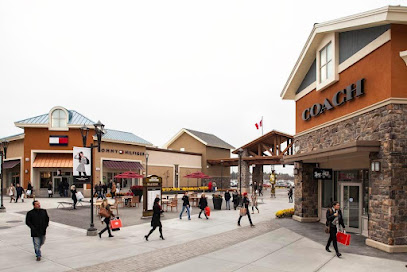
The Little Shop
25.9 km
Explore The Little Shop in Montreal for unique handcrafted treasures and vintage finds that embody the spirit of the city.

Boutique Cappadoce Cadeaux
25.9 km
Explore Boutique Cappadoce Cadeaux in Montreal for unique gifts and artisanal home goods that embody the city's vibrant culture.

Metro Daoust Valleyfield
26.3 km
Discover fresh local groceries and exquisite catering services at Metro Daoust Valleyfield, your supermarket destination in Quebec.

Essential bars & hidden hideouts
Champ Libre - Brewery & Distillery
20.6 km
Experience the best of local brewing and distilling at Champ Libre, a top brewpub and distillery in Mercier, Quebec.

The Holy Grail - Craft Brewery
22.6 km
Experience the essence of craft brewing at The Holy Grail - Craft Brewery, where local flavors and a welcoming atmosphere unite in Sainte-Thérèse, Quebec.

Prohibition - Bar à Bières
22.6 km
Experience the best of local craft beers and delightful cuisine at Prohibition - Bar à Bières in Sainte-Thérèse, a true gem for foodies and beer lovers.

Bar Bistro 1098
23.6 km
Experience the lively ambiance and delicious offerings at Bar Bistro 1098, Laval's go-to spot for an unforgettable dining experience.

Taverne Saint Martin
23.8 km
Discover Taverne Saint Martin in Laval, a vibrant bar offering an inviting atmosphere and a wide selection of drinks for an unforgettable night out.

Resto Bar Brasse Rires
23.8 km
Experience the best of Italian cuisine, comedy, and live music at Resto Bar Brasse Rires in Laval, Quebec, for an unforgettable night out.

132 Bar Vintage
24.0 km
Experience the vibrant nightlife of Montreal at 132 Bar Vintage, featuring delicious cocktails and a charming vintage ambiance.

Pub Chienne à Jacques
24.3 km
Experience the vibrant atmosphere and delicious cuisine at Pub Chienne à Jacques, a hidden gem in Blainville, Quebec, perfect for food lovers and social gatherings.

Bar Le Record
27.1 km
Discover the vibrant cocktail culture at Bar Le Record, Montreal's beloved bar offering innovative drinks in a lively atmosphere.

Bon Délire
27.4 km
Experience Montreal's nightlife at Bon Délire, where creative cocktails meet a welcoming atmosphere in the heart of the city.

Bar Courcelle
27.5 km
Discover the vibrant nightlife at Bar Courcelle in Montreal's Southwest, where delicious drinks and a lively atmosphere await.

The Emerald
27.8 km
Discover The Emerald, Montreal's vibrant bar and art gallery, where culture, cocktails, and creativity unite in a unique nightlife experience.

The Emerald « le bar sans nom / the no name bar »
27.8 km
Discover the eclectic atmosphere and creative cocktails at The Emerald, Montreal's vibrant no-name bar in the heart of Le Plateau-Mont-Royal.

Pub Bishop & Bagg
27.9 km
Discover the heart of Montreal's nightlife at Pub Bishop & Bagg, a vibrant bar and brunch restaurant in Le Plateau-Mont-Royal.

Double’s
27.9 km
Discover Double’s, a lively bar in Montreal’s Le Plateau-Mont-Royal, perfect for enjoying unique drinks and mingling with locals.




